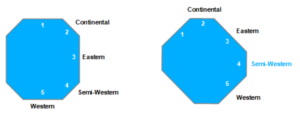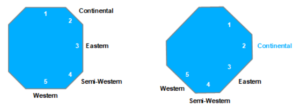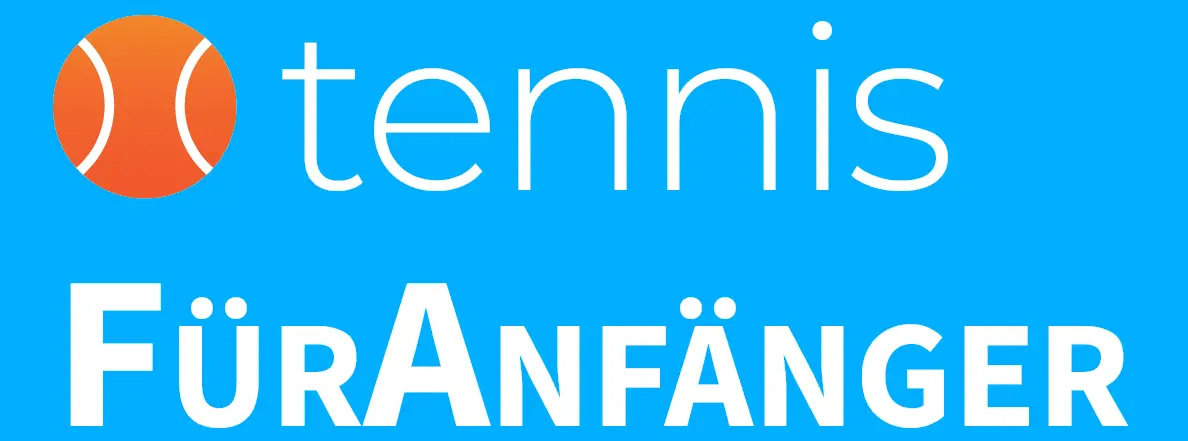Learn tennis forehand
In 5 steps to the perfect tennis forehand as a beginner
In 5 steps to the perfect tennis forehand as a beginner
The forehand is a particularly important stroke in tennis, as the strong forehand dictates the tennis game and prepares for winning the point. The forehand is played with the stronger hand, i.e. usually the right hand for right-handed players and the left hand for left-handed players.
Many tennis beginners usually learn the forehand as their first tennis stroke at the beginning of their tennis career, because the forehand is based on a natural movement. With the right forehand technique, you can make the game fast at the right moment or take out speed tactically.
Below we explain to tennis beginners the 5 steps to the perfect tennis forehand: from the forehand grip, the backswing, the movement and the outswing to forehand tips.
1. Tennis forehand grip
For the success of the forehand, the right forehand grip in the respective situation is the basis for a well played ball. Basically, we distinguish between two forehand variations:
a) Forehand topspin
The forehand topspin is usually played rather aggressively in tennis in order to dictate the rally. However, it is also possible to play the forehand topspin somewhat more passively, e.g. as a lob to outplay the opponent. Both balls are characterized by forward spin and a faster bounce away.
For playing the forehand topspin we recommend the so-called Semi-Western grip. This is used by the majority of all tennis players. Here, the racket is slightly bent forward in the lateral position at the top.

b) Forehand slice
In tennis, the forehand slice is usually played on the defensive as an emergency shot to work your way back into the rally. The forehand slice is often played high to gain time and to get back into the right position on the court.
For playing the forehand slice we recommend the so-called Continental grip. Here, the racket is slightly bent forward in the lateral position at the bottom.

The forehand topspin is by far the most played stroke on the forehand side, so we focus the following on the forehand topspin in the semi-western grip.
2. Tennis forehand backswing
You have returned to the center of the court and are waiting for your opponent’s stroke. You hold the tennis racket centrally in front of you and have an open foot position to be able to react quickly.
Your opponent hits the ball, you do a split step – a two-legged jump on your toes – and you see that the ball will come to your forehand side. You turn your body to the forehand side and at the same time bring the tennis racket out in a circular upward backward motion.
Your upper body is facing the net with your left shoulder as a right hander while your tennis racket is extended with your arm in the opposite direction of the net. Your knees are slightly bent and your weight is stable on your back foot.
3. Tennis forehand movement
A clean movement is crucial for the forehand. As soon as the tennis ball bounces in front of you, drop the racket down with your arm extended.
Then shift your weight from your back foot to your front foot and at the same time turn your upper body back towards the net. At the same time, accelerate the tennis racket with a loose wrist and hit the tennis ball with a “cover” – to create the topspin – in front of your body.
4. Tennis forehand outswing
The forehand topspin is finished with the outswing after hitting the tennis ball. As a right-handed player, you swing the tennis racket over your left shoulder and bend your arm. If you are left-handed, you swing it over your right shoulder.
Before going back to the center of the court, your upper body briefly turns in the opposite direction of the backswing.
Note that the backswing movement, the movement sequence and the outswing is a flowing movement.
5. Typical tennis forehand mistakes and tips
a) Move to the angle bisector
To prepare your forehand, move to the center of the court. The center of the court is not the center of the court but the bisector of your opponent’s point of impact. If your opponent hits the ball on the right side of the court, you move a little bit to the right side of the court, knowing that your opponent can play cross and long. In this way you save valuable time for optimal preparation of the forehand.
b) Point to the ball with your free hand
To stabilize your stance, point your free hand towards the tennis ball. This will help you to get your upper body in the right position early and start the movement in time.
c) Do not over-rotate your upper body
During the movement of the forehand, parallel to the rotation of the upper body, the arm is accelerated. Note that you can still look at the tennis ball at the point of impact and only then turn your upper body out. If you over-rotate your upper body early on, it will be difficult to hit the tennis ball cleanly, which often leads to frame hits on the tennis racket.

